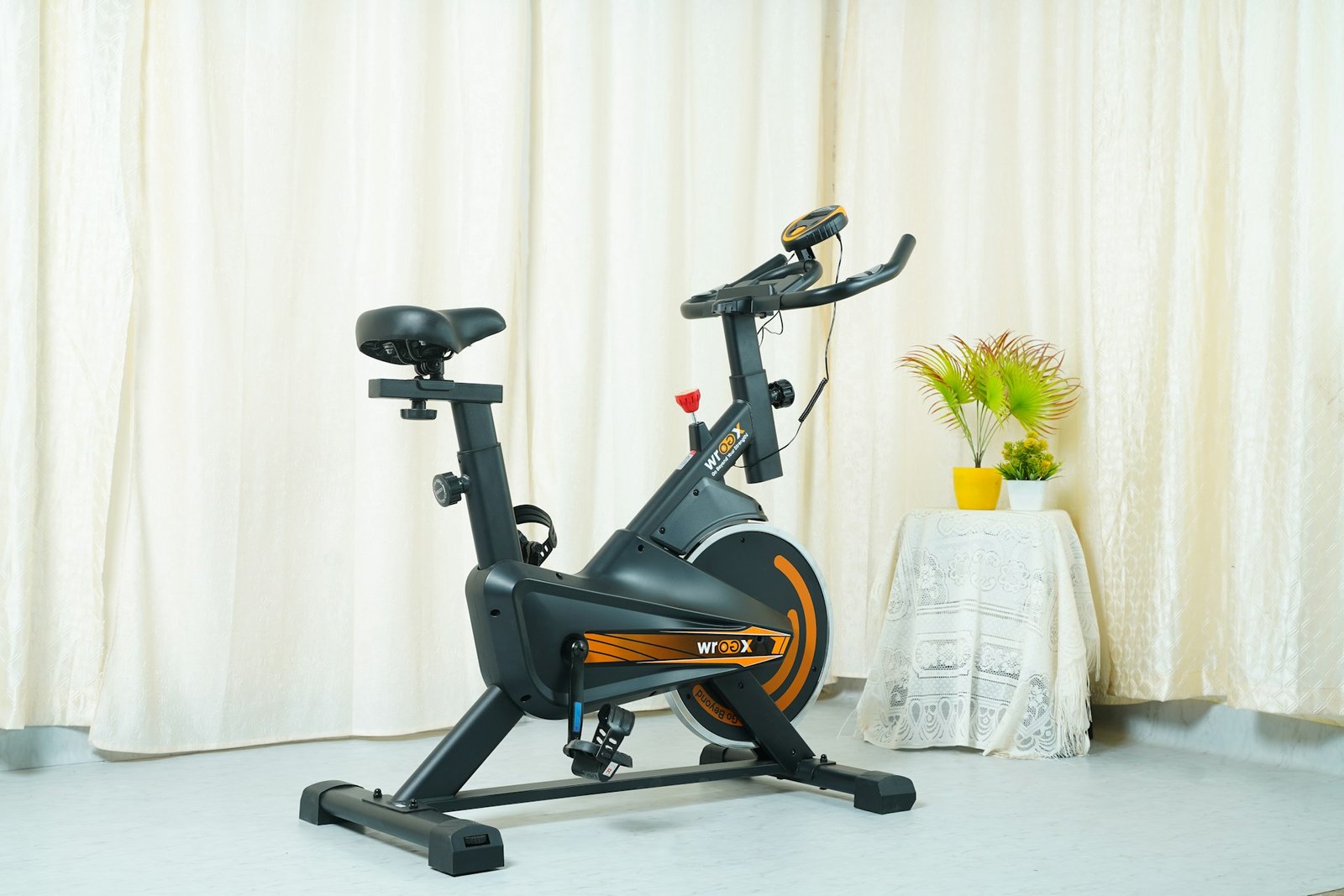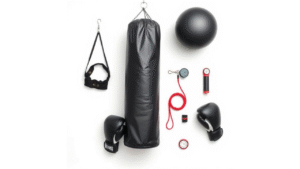Looking to upgrade your home gym or kickstart your cardio routine? You’ve probably come across two popular options: spin bikes and exercise bikes. While both offer effective indoor workouts, they cater to different fitness goals, comfort preferences, and intensity levels. In this guide, we’ll break down spin bike vs exercise bike and their key differences, so you can make an informed decision and get the most out of your fitness equipment.
Disclosure: We may earn a commission from links mentioned in this post, at no extra cost to you. We only recommend products we genuinely trust
Table of Contents
Quick Comparison
If you’re short on time, here’s the bottom line: choose a spin bike if you’re after high-intensity, full-body cardio workouts and want to mimic outdoor cycling. It’s great for burning calories, building muscle endurance, and pushing your limits. On the other hand, go with an exercise bike if comfort, convenience, and versatility are more important to you. It’s beginner-friendly, easier on the joints, and often more budget-friendly.
Features
The biggest difference between a spin bike and an exercise bike lies in the flywheel design and riding posture. Spin bikes have a heavier, perimeter-weighted flywheel that’s directly connected to the pedals. This means the pedals keep moving even when you stop, similar to a real outdoor bike. The resistance is usually manual and adjustable, giving you full control over workout intensity.
Exercise bikes, especially upright ones, have a lighter flywheel and are designed for comfort and ease of use. They typically include built-in workout programs, Bluetooth connectivity, and better tracking for metrics like time, distance, and calories. The seat is larger, and the riding position is more upright, reducing strain on your neck and back.
Spin bikes are usually more adjustable, allowing you to fine-tune the handlebar and seat height. However, exercise bikes often come with foldable designs, making them easier to store in small spaces.

Personal Experience
Personally, I found that spin bikes deliver a more intense, sweat-dripping workout. When I wanted to simulate road cycling or push myself with interval training, the spin bike came through every time. Standing up to pedal felt natural, and it activated my glutes and core more than I expected.
However, I also spent a few weeks using an upright exercise bike, and it was perfect for low-impact cardio while watching TV or listening to podcasts. It’s definitely the better choice for days when I just want to get my heart rate up without going all-out. I also appreciated the extra cushioning and the fact that I didn’t have to lean forward aggressively.
Pricing : Spin bike vs exercise bike
Spin bikes tend to be more expensive. A quality home-use model can cost anywhere from $400 to $1,500, depending on the brand, frame, and resistance system. Higher-end models might include a magnetic resistance system and heavy-duty frames for serious cyclists.
- 【40 LB FLYWHEEL】The 40 LB chrome flywheel is engineered to provide exceptional stability and riding momentum, ensuring c…
- 【FREE CONNECTED APP】 Enjoy FREE access to the SunnyFit App with every Sunny Health & Fitness product—no membership fees!…
- 【QUIET OPERATION】The belt-drive mechanism offers a virtually maintenance-free solution. Its whisper-quiet operation allo…
In contrast, exercise bikes are generally more affordable. Many solid upright models can be found in the $180 to $600 range. Even at the lower end of the price spectrum, some offer digital displays, heart rate sensors, and built-in workout modes. That makes them an attractive option for beginners or casual users.
- Choose YOSUDA: We have been specializing in the design and manufacture of high-quality home fitness equipment for more t…
- Smooth Stationery Bike for home: 30-pound flywheel and heavy-duty steel frame ensure riding stability. Belt drive system…
- Safe to Use: Designed to be sturdy and stable, the YOSUDA exercise bike provides a safe and reliable workout experience …
Pros & Cons
Spin Bike
Pros:
- Simulates outdoor cycling
- Burns more calories due to higher muscle engagement
- Better for high-intensity workouts and HIIT
- Sturdier and more durable build
Cons:
- Less comfortable (smaller seat, aggressive riding posture)
- Higher injury risk if used improperly
- More expensive
- No built-in programs or stat tracking unless you add them
Exercise Bike
Pros:
- Comfortable seating and upright posture
- Usually includes digital display with preset programs
- More affordable
- Foldable and space-saving
Cons:
- Less intense workout
- Doesn’t mimic real cycling mechanics
- Less muscle engagement overall
- May not be suitable for advanced athletes
Alternatives
If neither option feels quite right, you might consider a recumbent bike. These bikes come with a chair-like seat and pedals in front of you, making them ideal for seniors, those with mobility issues, or anyone recovering from injury. They’re gentle on the joints but still provide a decent leg workout.
For even more versatility, air bikes (or fan bikes) are another alternative. They combine upper and lower body movement and use air resistance—the harder you pedal, the tougher it gets. They’re excellent for HIIT sessions and full-body cardio, but they’re also quite loud and less comfortable for long rides and more expensive.

Performance, Comfort, and Workout Variety
Let’s break things down further:
- Performance: Spin bikes offer more resistance and demand greater muscle engagement. If your goal is endurance, stamina, and a real sweat, spin bikes win here.
- Comfort: Exercise bikes take the lead in comfort. With higher handlebars and cushioned seats, they’re easier on the back, shoulders, and sit bones.
- Workout Variety: Exercise bikes often feature multiple preset modes like fat burn, hill climb, or heart rate control. While spin bikes don’t offer these features by default, you can manually adjust resistance to simulate similar workouts.
- Space and Storage: Exercise bikes are typically more compact, and many are foldable, making them the better choice for small home gyms.
- Tracking and Tech: Exercise bikes almost always include a display for tracking progress. Spin bikes tend to be more “manual” unless paired with a separate cycling computer or app.
Conclusion: Who Is the Winner?
So, which bike is best for you — the spin bike or the exercise bike?
If your goal is high-intensity, calorie-burning workouts that build strength and endurance (especially if you’re training for outdoor cycling), the spin bike is the winner. It’s durable, powerful, and perfect for pushing limits. However, it comes with a steeper learning curve, less comfort, and a higher price tag.
If you’re just starting your fitness journey, want something more comfortable, or need a cardio machine that’s easier on your body and budget, the exercise bike is your go-to. It’s great for moderate workouts, tracking your progress, and staying consistent — especially in a small space.
In the end, your fitness level, workout style, and personal preferences should guide your decision. Either bike can help you improve your health and hit your goals — as long as you use it consistently.
If you’re interested in building strength beyond cycling, check out our detailed guide on essential calisthenics equipment for effective home workouts.








Pingback: 7 Proven Jump Rope Benefits Backed by Science
Pingback: Top 3 best NordicTrack Treadmills Under $1000
Pingback: Top 10 Home Boxing Gear Picks for Effective Workouts